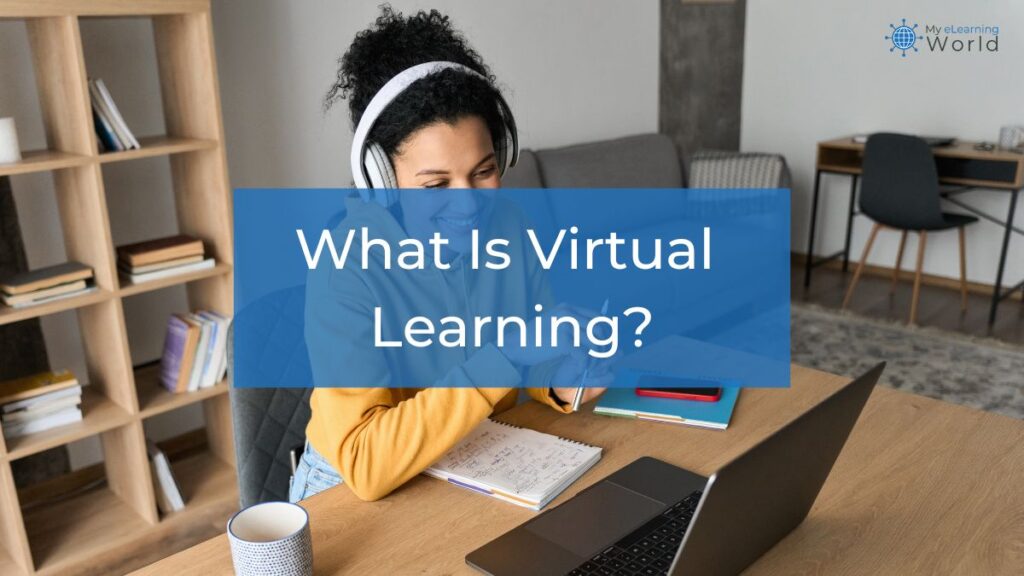What is virtual learning? How does virtual learning work exactly? And what do you need to make virtual learning successful?
Whether you’re creating an online course to sell, teaching primary or secondary school students remotely, or you’re the one taking classes online, it’s important that you have a decent understanding of what virtual learning is and how it works.
After reading this article, you will know everything there is to know about virtual learning, including what it means, as well as how to make high-quality virtual learning environments and experiences that keep students engaged with compelling content if you’re a teacher or instructional designer.
You can quickly get up to speed with the newest techniques that make it easier for instructors to make compelling content for their online classes.
After decades of creating virtual learning experiences and reviewing hundreds of online classes, I learned many things that help make a better virtual learning environment.
I will share the tips that I know will help you even if you are completely new to virtual learning, so read on.
What Is Virtual Learning? Defined
Simply put, virtual learning is the process of acquiring knowledge or skills through digitally delivered instruction, often using online platforms and resources.
The virtual learning experience is delivered via computer software, course content on the Internet, or some combination of both methods. The instructor communicates with the students using online video (live or on demand), forums, instant messaging, and email.

Virtual learning may include real-time video streaming (using virtual conference platforms) or asynchronous, on-demand classes with feedback and engagement from the instructor. Virtual learning works because it is more interactive when compared to courses simply offered online as eLearning. Learn more about e-learning vs. virtual learning here.
How Does Virtual Learning Differ from Traditional Learning?
The main difference between a virtual learning environment and a traditional learning environment is that traditional learning happens with face-to-face participation in classes offered in a physical space such as a school.

Virtual learning can be accessed by students remotely (a virtual classroom) without needing to attend classes in person.
How Does Virtual Learning Work? An Overview
Virtual learning operates through a blend of technology, content delivery, and interaction mechanisms that simulate a classroom-like environment, in an online setting. Here’s a quick breakdown of the pieces:
- Digital Platforms: At the heart of virtual learning are platforms or Learning Management Systems (LMS) like Moodle, Blackboard, or Canvas. These platforms host courses, track student progress, and facilitate interactions.
- Content Delivery: Instructors can upload various materials such as videos, slides, readings, and quizzes. These can be accessed by students anytime (asynchronous) or at scheduled times (synchronous).
- Interactive Tools: Virtual learning isn’t just about content consumption. There should be interactive components. Platforms often have tools for real-time discussions, forums, and chats, allowing students to ask questions, collaborate on projects, or engage in discussions.
- Assessments: Just like traditional learning, there are typically quizzes, tests, as well as standard classroom assignments. Feedback can be provided directly through the platform.
- Flexibility & Personalization: By nature, virtual learning is its adaptable, often more so than traditional classrooms allow for. Courses can often be tailored to individual student needs, allowing them to progress at their own pace or delve deeper into areas of interest.
- Engagement Mechanisms: To keep students engaged, virtual learning often incorporates multimedia elements, interactive simulations, and gamified elements. These not only make learning more enjoyable but also enhance retention.
Virtual learning combines the structured approach of traditional classrooms with the flexibility of online platforms, offering a dynamic and adaptable learning experience.
What Do You Need for Virtual Learning?
As an instructor for virtual learning classes, you will need some equipment and a learning content management system to deliver the educational materials. You will want a system to track your students’ progress in a virtual school.

Here is the list of what a virtual learning instructor needs:
- Computer: Teachers want to have a computer that has sufficient RAM(8 MB or more), a decent hard drive storage for files (1 TB is preferred), and is easy to connect to the Internet with an Ethernet cable and Wi-Fi.
- Internet Connection: A high-speed (10 MB per second or higher) Internet connection is important if you plan to conduct real-time virtual presentations using video streaming or group chats.
- Microphone: You want to have a decent microphone that makes your voice sound good. In my experience, here are some of the best microphone options for eLearning.
- Webcam: You need a webcam if you plan to use video streaming.
- Software You need software to help you create virtual learning content and a content management system to present the content in an organized way and track students’ progress with quizzes as they finish each section of the course.
Optional items are a document camera if you want to easily present photos of documents and video editing software if you plan to produce edited video content for self-directed viewing by students. You may also want to make it to where students can speed up your online videos for a streamlined viewing experience.

You can advance your career as a virtual instructor and educator if you get certified by studying instructional design. If you want to get a certificate as an instructional designer, read my article here for some suggestions. I’ve been studying instructional design programs for years, and think you’ll find my roundup a huge timesaver.
Students will need a computer or tablet with a decent Internet connection to log on to view the virtual learning content.
Forms of Virtual Learning
There are three categories of virtual learning experiences, which are:
1. Asynchronous Courses
Asynchronous online courses are not presented or taken in real-time. Students are given access to content and assignments that they can work on at their own pace. They may be given a specific timeframe to take quizzes and complete the work, or an online course may be open-ended without a specific deadline.

Interactions between the student and the instructor and perhaps also between students happen through discussion forums, wikis, group chats, and blogs. There is no specific schedule for class attendance.
Asynchronous online courses are preferred by students with busy work schedules and other time constraints because they provide flexibility to allow students to access content without a calendar schedule.
2. Synchronous Courses
Synchronous online courses are designed so that the instructor and all other enrolled students can interact online in a virtual classroom based on a set schedule. In ways similar to a webinar, participants interact with each other using text messages, video streaming, and live chat.
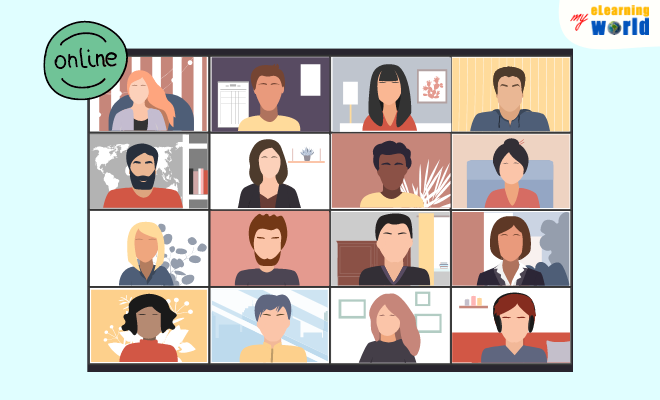
Synchronous courses allow students to participate using remote learning connections without having to attend in-person classes.
3. Hybrid Courses
Hybrid courses, which are sometimes called “blended” courses, have both a virtual learning environment and in-person environment. It’s a balanced mix of online education and traditional schooling.
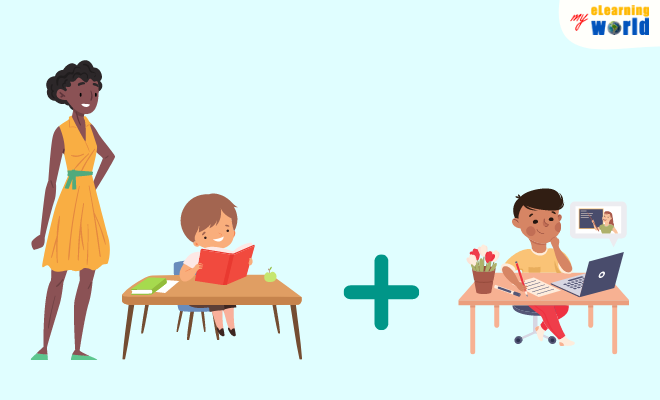
Usually, hybrid courses meet in person on a set schedule and use computer-based interactions to facilitate communication to augment the experience of in-person classes.
Advantages of Virtual Learning
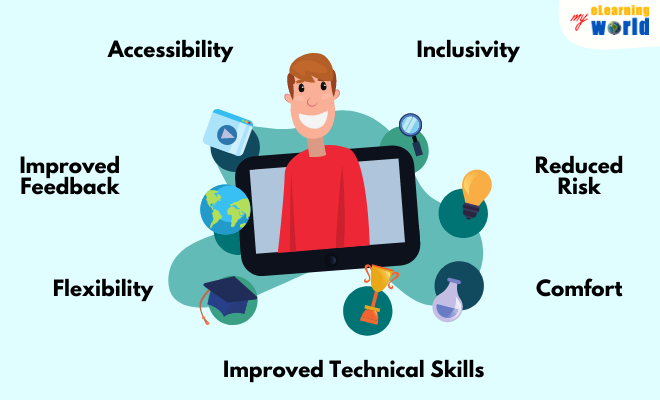
Virtual learning has distinct advantages when compared to in-person classes, which are:
- Reduced Risk: No contact with other students is a risk reduction strategy when faced with a global pandemic.
- Inclusivity: Students can participate in virtual learning from anywhere with a decent Internet connection.
- Accessibility: The ability for any student to access content is limited only by their computer/tablet equipment and Internet bandwidth.
- Cost-Effectiveness: Providing virtual learning experiences is much less costly than in-person classes.
- Global Perspective: A virtual learning experience can provide an expanded world view by remotely connecting people from different countries.
- Improved Feedback: Students get immediate feedback on learning comprehension by taking quizzes frequently while enjoying the virtual learning content.
- Flexibility: Asynchronous educational material is available 24/7, 365 days per year, whenever any enrolled student desires to access it.
- Comfort: Students can enjoy the content from the relaxed environment of their homes.
- Community: Surprisingly, community and relationship building is enhanced by having a shared virtual learning experience.
- Improved Technical Skills: Students can learn how to research topics on the Internet and become comfortable with using the computer technology.
In this video, produced by Too Cool for Middle School, a teacher interviews students to learn more about how they feel about virtual learning.
Students say that they had trouble getting used to virtual learning at first, and then once they got used to it, it was generally beneficial.
Examples of Students’ Successes in Studying While Learning Virtually
In response to the pandemic, the University of Delaware used a content management system along with an online grading and analytics platform called Crowdmark to move 6,422 course sections online in two weeks from March 16, 2020, to March 30, 2020. Some students and instructors had difficulty adjusting to the abrupt shift to online course content; however, the overall experience was positive.
The Fullerton California School District became a model that other communities could emulate. Several schools in the district were able to transition to virtual classes almost seamlessly. The success was enabled by the school district supporting the students who needed it, with the ability to use WI-FI hotspots for those who did not already have an Internet connection.

The State University of New York uses the Carnegie Math Pathways system to teach students complex math. Distance learning had to be established due to the pandemic. The virtual learning platform used by the university adjusts the content to each student’s specific progress and needs. Teachers schedule regular surveys to check in with students. Teachers can monitor their acquisition of knowledge, self-efficacy, and confidence in comprehending the course materials.
In this video, produced by George Mason University, Associate Professor Melissa Broeckelman-Post gives five tips for success when participating in virtual learning.
The main takeaways from this video are to set a regular study schedule, study in a place free from distractions, use available online resources, and stay in contact with instructors.
Disadvantages of Virtual Learning
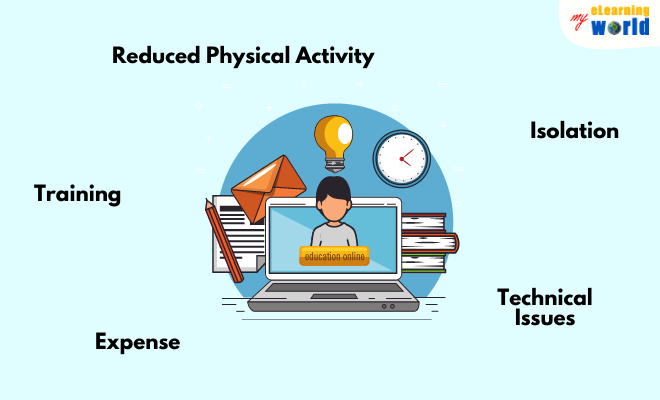
There are disadvantages of virtual learning experiences, which are:
- Expense: To set up virtual learning online requires a significant investment although the overall cost is lower than in-person classes.
- Technical Issues: It is common for a new virtual learning system to have many glitches that need to be fixed as the system is implemented.
- Reduced Physical Activity: Spending more time in front of a screen tends to cause students to have problems from the lack of physical activity.
- Training: Instructors must be trained on how to use a virtual learning system.
- Isolation: Isolation of students may lead to reduced social skills caused by the lack of person-to-person interaction. Isolation may also cause mental health issues.
In this video, produced by Med School Insiders, there are helpful tips on overcoming the unique obstacles students experience when taking classes online.
Stay organized, manage your schedule, and maintain contact with instructors.
Reasons of Students’ Failing in Studying While Learning Virtually

There are many examples of students failing while trying to take virtual learning classes. This is caused by these factors:
- Lack of Clear Expectations: Students can’t succeed unless their teachers set clear virtual learning expectations for how to participate in the online environment.
- Lack of Discipline: Students need to be more self-motivated to succeed when taking virtual classes.
- Prioritization: USA Today reports that when students are taking virtual classes from home, there are many things that cause distraction. Virtual learning needs to have a high prioritization over other household chores and activities.
- Increased Dropouts: Dropout rates soared due to the pandemic as students from low-income households could not afford the expenses of computer equipment and maintaining an Internet connection.
- Lower Grades: CBS News reports that some students who do well while attending in-person classes are struggling with online learning.
- Lack of Supervision: Students, who are in K to 12 grades, prefer to play video games and chat with friends over studying. Without sufficient supervision at home, a student with online access is more likely to do other things than studying.
In this video, produced by Edmentum, the narrator Kate Weber talks about virtual learning challenges for elementary students. To have the most success, she encourages significant adult supervision of younger students.
When done properly, the virtual learning experience can focus children on learning and not as much on extraneous things that occur in a physical classroom.
Useful Resources
- Virtual learning is the way forward for educators
- Let’s distinguish online from virtual
- What is distance learning? The complete guide
- 4 tips for teachers shifting to teaching online
Conclusion
Virtual learning is the future of online learning, especially in higher education.
This field has significantly increased demand for instructional designers who can create virtual learning experiences that are compelling for students. For those considering a masters in instructional design, read my reviews here.
The salary for positions in this field of creating virtual learning programs is excellent. Glassdoor says the national average instructional designer salary is $69,720 to $77,360. The work is very satisfying and rewarding.
- Elevating Your Virtual Presence: Why EMEET’s SmartCam S800 Stands Out in Modern Communication - 06/04/2025
- US Teachers Will Spend $3.35 Billion of Their Own Money on Classroom Expenses in 2025-25 School Year - 06/04/2025
- Report: Leveraging AI Tools Could Help US Teachers Avoid $43.4 Billion of Unpaid Overtime Work - 06/04/2025
